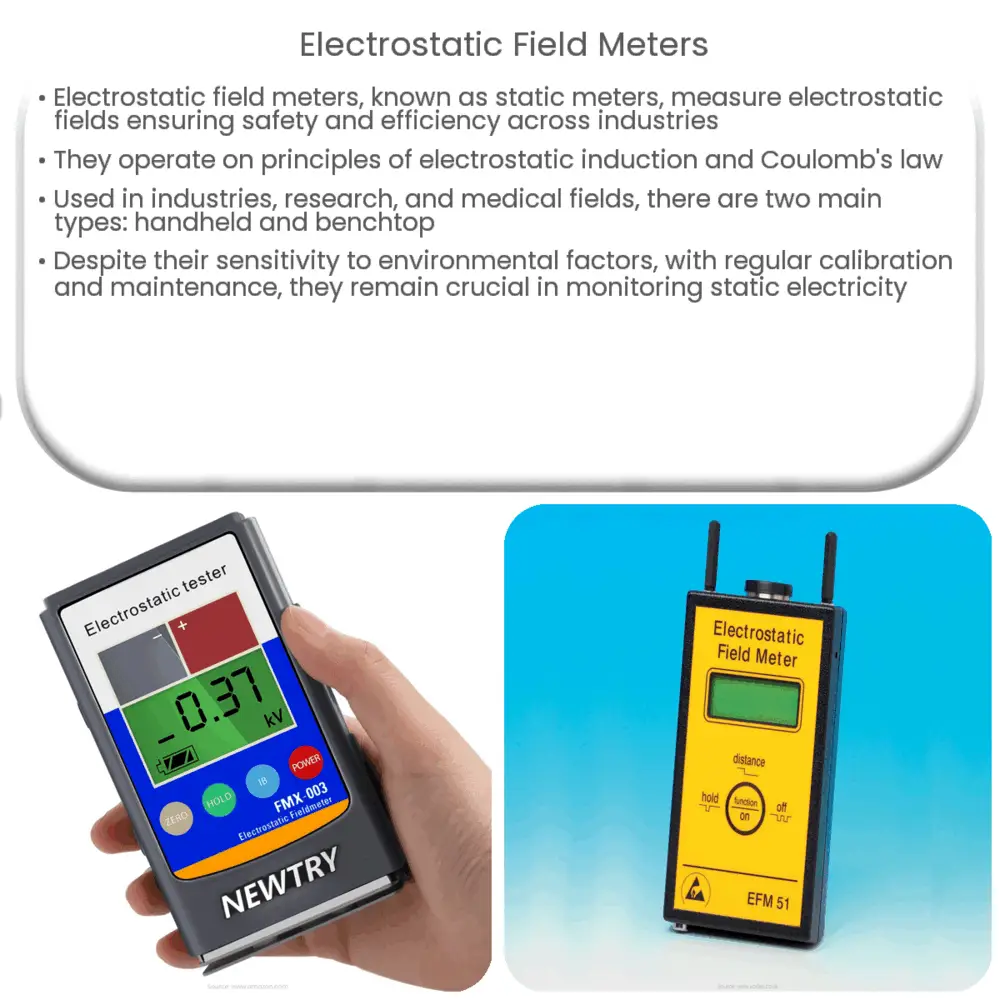Explore the fundamentals of Electrostatic Field Meters, their operation, usage across various industries, maintenance, and future perspectives.

Introduction to Electrostatic Field Meters
Electrostatic field meters, also known as static meters, are specialized devices designed to measure and monitor the levels of electrostatic fields. These instruments play a crucial role in several industries, ensuring the safety and efficiency of various operations. This article delves into the fundamentals of electrostatic field meters, highlighting their principle, usage, and importance.
Principle of Operation
An electrostatic field meter operates based on the principles of electrostatic induction and Coulomb’s law. The meter possesses a sensor that detects the presence of static electricity. When brought near a charged object, the meter induces a charge within its sensor, which is then measured and presented as an electrostatic field strength.
Uses of Electrostatic Field Meters
-
In Industrial Applications: Electrostatic field meters are often employed in industries where the buildup of static electricity can lead to potential hazards. Examples include the chemical, electronics, and printing industries, where these devices are used to detect and measure electrostatic charges, helping to prevent electrostatic discharge (ESD) incidents.
-
In Research and Development: In laboratories and research centers, electrostatic field meters are essential tools used for various scientific explorations and experiments involving static electricity.
-
In Medical Field: In the medical realm, these meters are useful in certain diagnostic procedures that necessitate the measurement of body static electricity.
Types of Electrostatic Field Meters
There are primarily two types of electrostatic field meters: handheld and benchtop models. 1 Handheld models are portable and convenient, offering the flexibility to measure static electricity in various locations. On the other hand, benchtop models are more robust and often come with more advanced features, making them ideal for laboratory or industrial settings.
Important Features
When selecting an electrostatic field meter, certain features should be considered. These include the meter’s range of measurement, resolution, accuracy, and the presence of an analog or digital display. The choice of meter should align with the specific needs and requirements of the task at hand.
Limitations
While electrostatic field meters are incredibly useful, they are not without their limitations. These devices are sensitive to temperature, humidity, and other environmental factors, which can affect their accuracy. Additionally, they require regular calibration to ensure precise readings.
Maintenance of Electrostatic Field Meters
Maintenance is a key aspect of ensuring the prolonged and accurate functionality of electrostatic field meters. Given their sensitivity, these devices should be routinely cleaned and calibrated. Calibration is of utmost importance as it allows for the correction of any drift in the readings over time and ensures the device’s continued accuracy and reliability.
Future Perspectives
With advancements in technology and the growing importance of safety regulations across various industries, the demand for accurate and efficient electrostatic field meters is likely to increase. Improvements in sensor technology and digital electronics can potentially enhance the sensitivity and accuracy of these devices, opening up new applications and avenues for their use.
Choosing the Right Electrostatic Field Meter
There is a wide array of electrostatic field meters available in the market, each with their specific features and capabilities. To choose the right one, you must consider your unique needs and requirements. Factors such as the nature of the task, the environmental conditions, the required range and resolution of measurements, and the availability of calibration services are all important to consider when selecting the most suitable meter.
Conclusion
In conclusion, electrostatic field meters are indispensable tools for measuring and monitoring static electricity. Their importance stretches across multiple sectors, including industry, research, and healthcare, where they serve to ensure safety, efficiency, and precision. Despite some limitations and the necessity for regular maintenance and calibration, their benefits outweigh the challenges. As technological advances continue to push boundaries, we can expect to see more sophisticated and accurate electrostatic field meters in the future, further enhancing their application and value in our increasingly technology-driven world.

